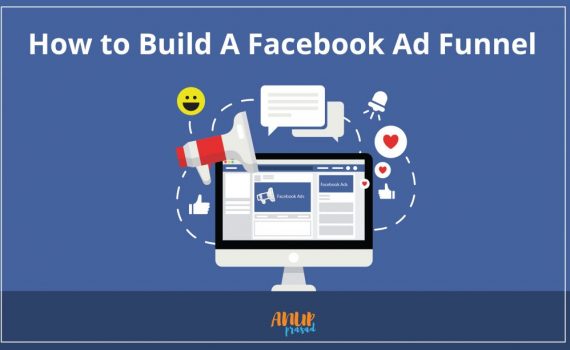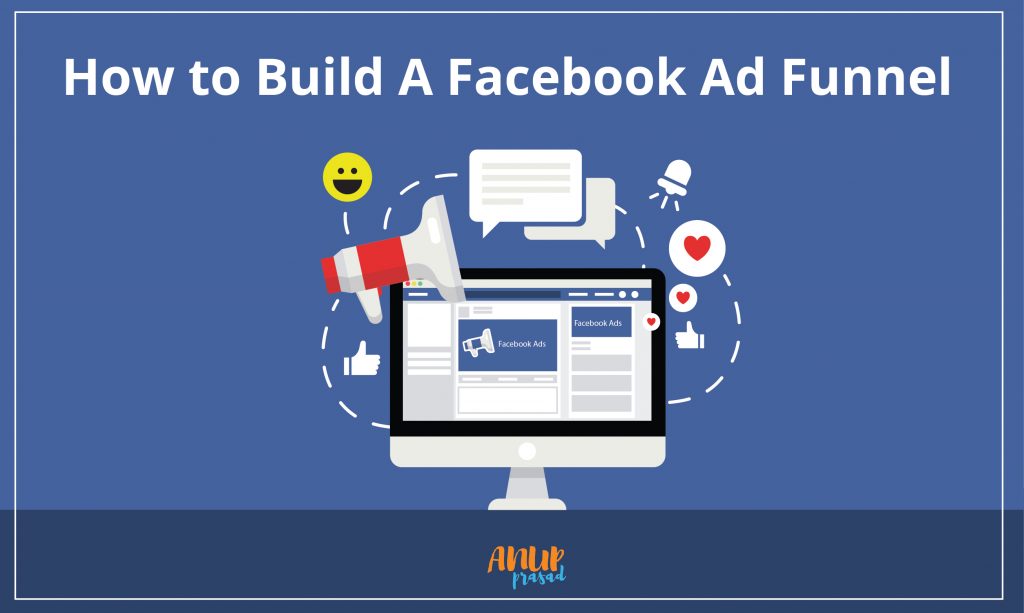
Recommendation to create a Facebook ads funnel
Category : Facebook Ads
Organizing your prospects into different stages like this allows you to craft messaging that can honestly speak to their needs, allowing them to transition seamlessly between each stage of the funnel. Through this process, you’re able to develop relationships with potential buyers, gain their trust, and bring them steps closer to your ultimate offering.
How did we use Facebook and email marketing to bring the marketing funnel to life for one of our clients? Here’s the process:
Step 1: Target high-funnel prospects with Facebook video marketing
It’s important to introduce people to your product or service before you ask them to buy from you. This introduction occurs in the Facebook ad brand awareness stage. Our strategy starts with using Facebook’s video views campaign objective to show video ads to top-funnel prospects.
Why video marketing is important
Video marketing is becoming more prominent than ever before. As the average human attention span gets even shorter, companies need to find newer and more creative ways to deliver their message quickly and effectively. Video helps them to do just that. A 30-to-60-second video can share more about your brand’s unique story than a simple image or text ad can, especially when there’s a character limit. For brands with complex products, video also helps make information easier to digest.
Another benefit of video marketing is its ability to evoke emotions from viewers through auditory and visual elements. Video encourages social shares, which can help spread your message even further. We’ve seen a lot of engagement with our video ads, which is valuable even when viewers decide not to click through. When a company provides prospects with useful and interesting information, it helps them build trust and create long-term relationships.
Understanding the video views campaign objective
The “Optimization for Ad Delivery” setting in Facebook allows you to choose the event you want to optimize for in your ad set. Facebook’s goal is to then get you as much of that result as possible (and efficiently). Unlike other campaign objectives, this one specifically optimizes for video views.
Defining your audience
One of the benefits of using this “Optimization for Ad Delivery” setting is that you’re able to reach a wide audience at a significantly lower cost per 1,000 people reached when compared to other campaign types. At this point in the marketing funnel, reaching as many people as possible is our only objective. Why? Because it helps us grow our remarketing audiences, which are key to the next step in our strategy.
Therefore, the audience for your video views campaign should be broader than what you would normally target in a campaign optimized for conversions. When we first started using this campaign objective, we defined our audience by interests and locations. We soon realized that this limited us and that we were missing out on potential prospects who did not fall into our targeted interest categories. As a result, we began targeting people solely by location and then used the data Facebook collected on how long people watched our video to help us gauge interest and relevancy.
The offers in the next two stages of this strategy help narrow this audience down even further. When this audience becomes more targeted, it will grow smaller, which is why having more data to start with is so important. For businesses with very niche audiences, expanding visibility and reach in this first stage is essential; it’s harder for Facebook to optimize and deliver the most efficient results when it’s working with a small audience.
Creating video content
If you’ve already created videos for your website or social media platforms, this strategy is perfect for you. Guess what? You can use that existing content to engage a new audience of prospects.
But what if you don’t already have videos? In that case, we highly recommend you start creating some as soon as possible. Video marketing, including B2B video marketing, is growing every year. If you’re in the B2B industry and need to explain how your product/service works to new prospects, it may be hard through a text ad, especially when there’s a character limit. It’s much more effective to show prospects a 30-second video ad, as it can help increase a user’s understanding of your message.
While other objectives don’t optimize for video views, they are available to support video. Videos are a great way to add value to messaging in every stage for the Facebook ads funnel, including in the campaign type described next.
Step 2: Retarget mid-funnel prospects with lead ads
The next step is to use retargeting to reach the high-funnel prospects who’ve already seen your video view ads. You should present this audience with a mid-funnel asset, such as a demo or whitepaper, in return for their email address or other personal information. Not only will this asset help educate them about your product/service, but it will also allow you to use the information you’ve gathered offline to continue the nurturing process. We recommend using Facebook lead ads for these mid-funnel assets.

How to generate leads on Facebook
Facebook lead ads simplify the conversion process by eliminating the need for a landing page. When a user clicks the call to action button on the ad, a form loads on the screen instead of sending users to a landing page on a website. This feature is valuable for many reasons:
In our client’s case, we used lead ads to invite the people who watched our video ads to join our email newsletter and offered a discount on our services in return. Although we chose to target our video view audience, your audience doesn’t necessarily have to come from the top of the facebook ads funnel; you can also use remarketing audiences from another source, such as your website.
Facebook lead ad retargeting best practices
When creating lead ads on Facebook, consider these tips:
It’s important to note that blog posts are another mid-funnel usable asset in this stage. Instead of sending prospects to a lead form, you would send them to a landing page. While you wouldn’t be collecting any personal information with this asset, you can retarget those visitors later with a lower funnel asset that does utilize a lead form. Multiple touchpoints and resources are an important part of the nurturing process.
The time it takes to nurture prospects will vary by industry and the complexity of your product or service. Prospects who have to make a big investment might need more time and information before they can reach the final stage of the funnel.
Speaking of which…
Step 3: Target low-funnel prospects with an offer
By the time you’ve gotten to this point in the strategy, you will have hopefully nurtured your high-funnel leads into low-funnel prospects. If you’ve done everything right, these people will now know more than just what you offer-they will have gained insights into your business and have a deeper trust for your brand.
Your audiences for this step should include anyone who has not yet shown high buyer intent by this stage of the marketing funnel, whether acquired on Facebook or another source. For example, we created one ad set with our email list and another with website visitors. Make sure to exclude converters from these audiences. The campaign objective you use will depend on your industry; a conversions campaign might make the most sense if people can purchase your product or service online, while B2B marketers might be better off using a lead generation through Facebook campaign to promote a consultation or demo. Either way, you’ll want to encourage users to take the lowest-level action they can complete (and that you can track) online.
Read more Facebook Ad guide for beginners
_______________________________________________________________________________
Please contact us for seo service packages at TDHSEO.COM.
TDHSEO Team
Email: tdhseo@gmail.com
Skype: tdhseo
https://www.facebook.com/tdhseo
Thank you!